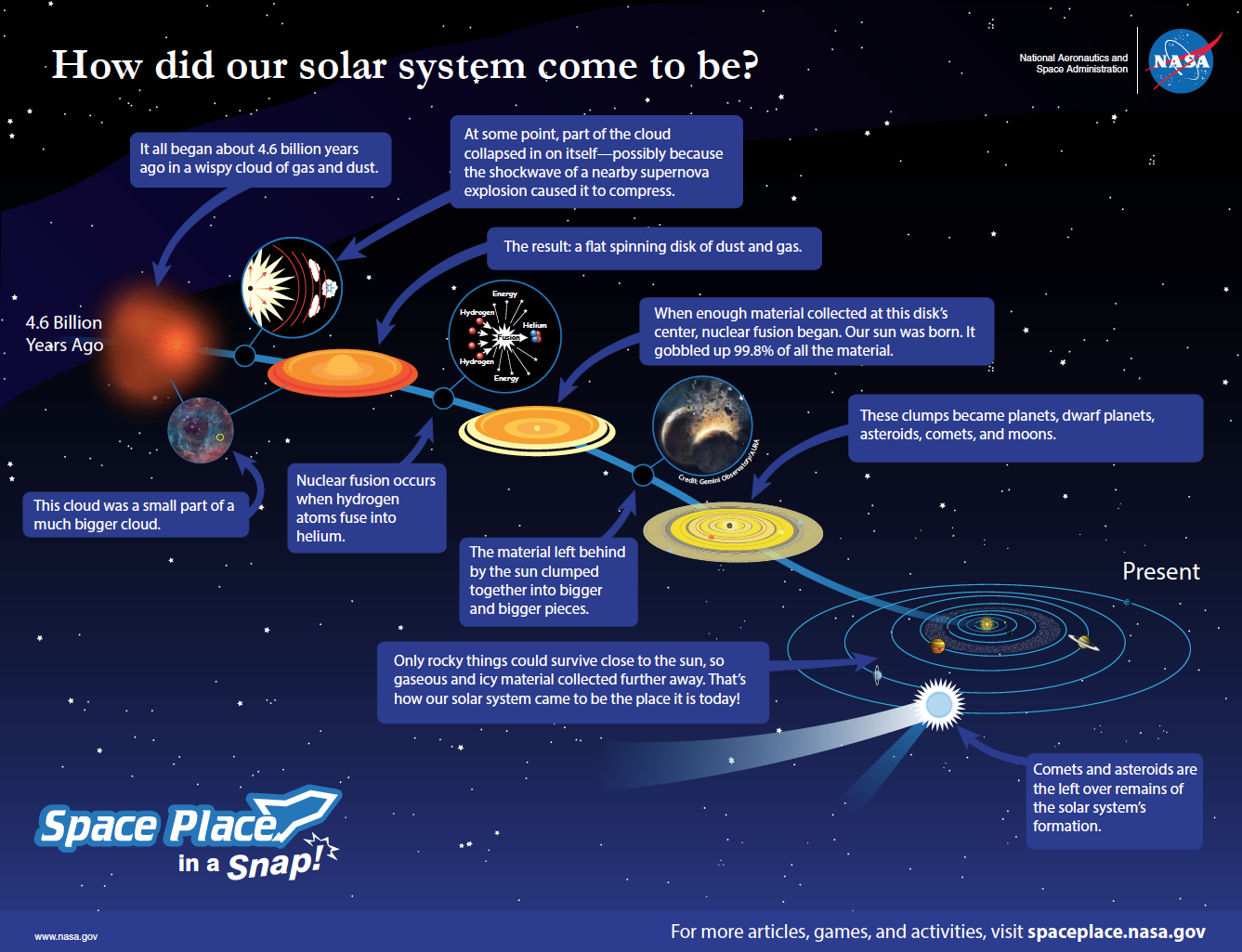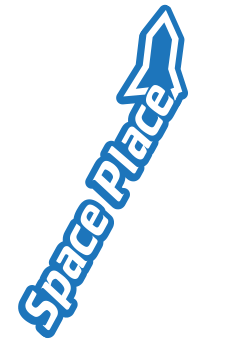Click here to download this video (1280x720, 14 MB, video/mp4).

Download a poster of this animation!
8.5 x 11 inches
8.5 x 13 inches
11 x 17 inches
Click here to read a transcript of this story
The solar system is a pretty busy place. It’s got all kinds of planets, moons, asteroids, and comets zipping around our Sun.
But how did this busy stellar neighborhood come to be?
Our story starts about 4.6 billion years ago, with a wispy cloud of stellar dust.
This cloud was part of a bigger cloud called a nebula.
At some point, the cloud collapsed—possibly because the shockwave of a nearby exploding star caused it to compress.
When it collapsed, it fell in on itself, creating a disk of material surrounding it.
Finally the pressure caused by the material was so great that hydrogen atoms began to fuse into helium, releasing a tremendous amount of energy. Our Sun was born!
Even though the Sun gobbled up more than 99% of all the stuff in this disk, there was still some material left over.
Bits of this material clumped together because of gravity. Big objects collided with bigger objects, forming still bigger objects. Finally some of these objects became big enough to be spheres—these spheres became planets and dwarf planets.
Rocky planets, like Earth, formed near the Sun, because icy and gaseous material couldn’t survive close to all that heat.
Gas and icy stuff collected further away, creating the gas and ice giants.
And like that, the solar system as we know it today was formed.
There are still leftover remains of the early days though.
Asteroids in the asteroid belt are the bits and pieces of the early solar system that could never quite form a planet.
Way off in the outer reaches of the solar system are comets. These icy bits haven’t changed much at all since the solar systems formation.
In fact, it is the study of asteroids and comets that allows scientists to piece together this whole long story.




